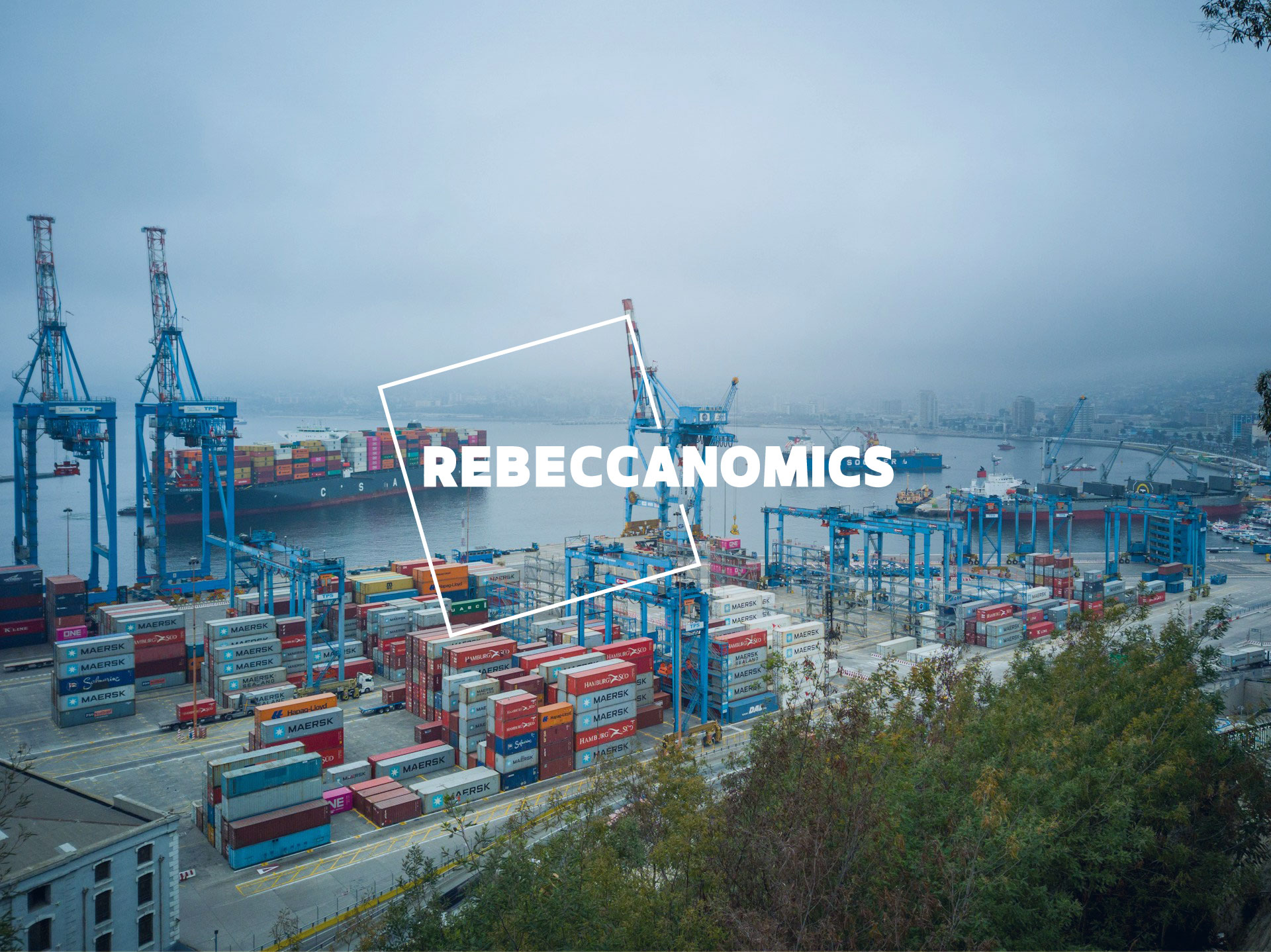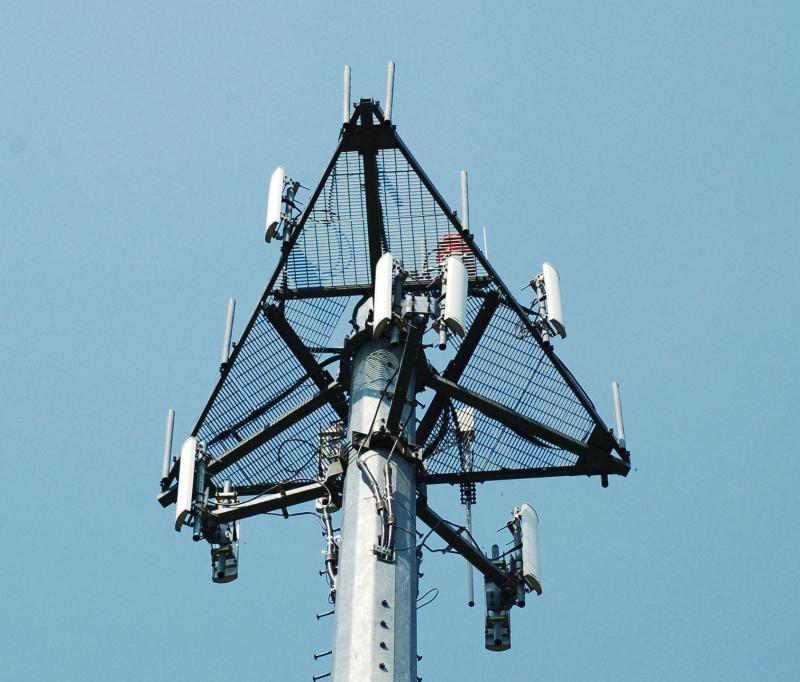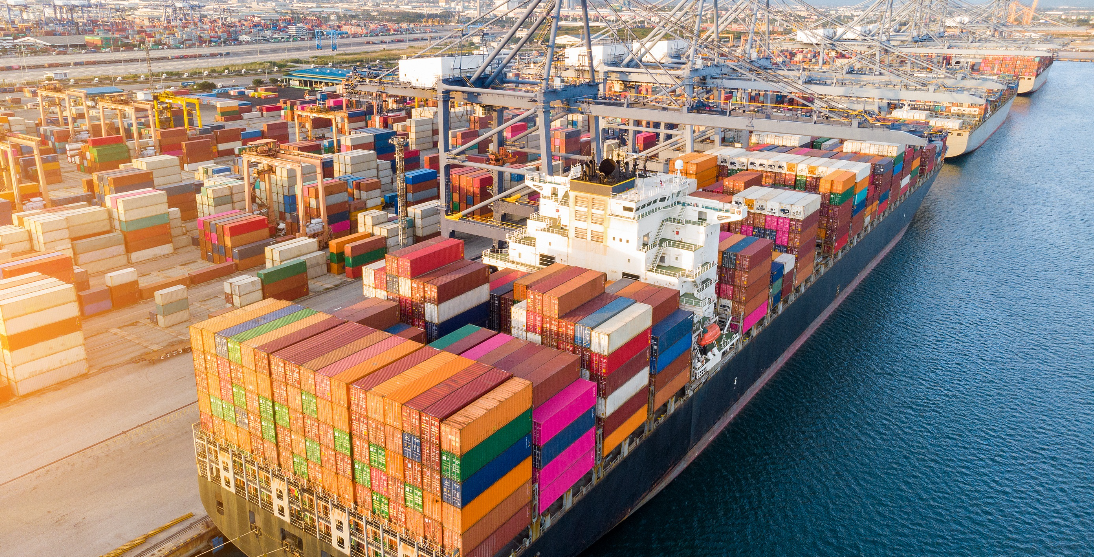
UK & DE Freight in 2024 and Beyond: A Supply Chain Logistics Case Study
Dive into the future of UK & DE freight: Adaptation, green logistics, and technological innovation shaping 2024 and beyond.

Trade fragmentation, according to the WTO and the IMF, is “now at the heart of the economic policy debate”[1] while for the ICC it represents a “risk for business” because it alters the way in which supply chains are organised and, accordingly, business decisions are made.[2] But what is it, why does it matter and, perhaps most importantly of all, how can we bring the economics and politics of trade back together again in a way that supports supply chain resilience as the IMF’s Chief Economist Kristalina Georgieva says, without “creating a world war”?[3]
First, that the world’s politics and economics appears more fragmented is self-evident. A weaponised rhetoric around trade since 2017 reflected the economic nationalism that brought us trade wars that were “quick and easy to win” but that have ultimately undermined the power of international organisations such as the World Trade Organisation to uphold the rules-based order that is so important to multilateralism and trade as a force for economic growth and development.[4]
Fragmented trade is arguably the product of a process that is not new and has been evolving since the global financial crisis. For the WTO in 2014 it was about the “foreign investment, global supply chains and production sharing”[5] that would re-shape the way in which the WTO operates. Now the view of fragmentation appears to be that it is precisely the opposite – it is the threat to globalisation from geopolitical rifts[6], protectionism and export controls[7]; it is also the acceleration of digital competition, emerging market debt and the ever-increasing focus on “friend-shoring” and industrial policy as a means of excluding adversaries from global supply chains.
In short, trade fragmentation is a by-product of globalisation itself. In the WTO world of 2014, fragmentation was isolating emerging markets because investment capital, ideas and production were located on the basis of creating economic value at the best possible cost. Now, as we move towards a “Globalisation 2.0”, we are beginning to see a “values-driven” globalisation – that is, one that is defined by the geoeconomics and geopolitics of Great Power Conflict. Within this framework, trade is not simply a benign driver of multilateralism and economic welfare creation. Rather, has become a tool of coercion, and a means of projecting power over adversaries.
But does all this matter? The evidence is mixed: while the WTO and the IMF forecast just 1.7% growth in world trade volumes in 2023, it is expected to rebound to 3.2% by next year. According to the ICC, and to DHL’s globalisation index[8], there is little or no evidence that that flows of capital, labour, goods and services, and information have diminished. While the ICC highlights the reduced role of the US dollar in international trade[9], the biggest drop in the dollar’s use in international trade was between 2000 and 2010 of some 10%; the drop between 2011 and 2023 was comparatively small at 2% and arguably reflects the use of more currencies in international trade at the expense of the euro than the decline of the dollar in itself.
Yet geopolitically the battle lines are sharpening, not just between Russia and the “West” (the United States, NATO and the European Union), but also between China and the “West”. They are drawn across finance, technology, commodities such as oil and wheat, supply chains, and increasingly over human rights, climate change. As such, these battle lines challenge the very nature of market economics and trade itself. In short, who we do business with, how we do business and what that business entails has become the concern of national strategy in a way that has not been seen on this scale before; in short, trade has become strategic as the concept of power has diminished in importance.
This does matter because it is the battle for the 21st Century. Nation states are using trade to balance their domestic and foreign policy interests in a world where the prospects for Mutually Assured Destruction has limited the prospects for direct military confrontation between great powers. As we can see with Russia at present, the nuclear peace is fragile. So how do Nation States protect national interests, build power and constrain aggression in an adversary and can it ever be successful?
So how do we bring it all back together again? For the WTO, “trade continues to be a force for resilience in the global economy”. Its models suggest that the benefits of further trade liberalisation are great. Indeed, they outweigh the heavy opportunity costs associated with the current pattern of protectionism and “decoupling” into rival economic blocs by some 8.7% of real GDP.[10] For the WTO there are gains in terms of income, but also in terms of resilience and security of supply from a more global and liberal approach to trade. In fact, argues the WTO, the import-facilitating measures and restraint in imposing export restrictions of its members since the Russia-Ukraine crisis began, “likely played a role in keeping prices increases in check” over the past year leading to the conclusion that, “trade is an effective tool to limit crises.”
No-one could disagree with the sentiment behind this research. However, it is somewhat naïve against the backdrop of Great Power Conflict that it is not just about land and resources (geopolitics) but also about a challenge to the Western dollar-based hegemony of the market-based international order. That is, it is geoeconomic as well.
The Realpolitik is that China is perceived as, at best, a strategic competitor by the EU, the UK, the US and other allies because of the challenge it poses. Similarly, Russia’s dominance of energy supply to Europe, and the increasingly apparent dominance of China in Rare Earth Metals and Critical Mineral supply[11] has highlighted the importance of reducing supply chain dependency on one supplier.
In other words, national security is now critically about the Realpolitik of trade and supply chain resilience. Trade policy, as well as the economics behind it, needs to reflect that. There is no evidence at present, according to any of the reports covered here, that trade is decoupling or that separate trading blocs are emerging. But that does not mean that this will not happen in the future – it’s just that the structure of trade takes a long time to shift.[12]
Trade, or more broadly commerce, is being used strategically to constrain adversaries effectively turning trade into a domain of warfare – this is far more serious than a debate about trade liberalisation. But equally, while it may be possible to use sanctions and export controls to exclude an adversary – specifically Russia – from the globalisation of the last 30 years, it will not be excluded necessarily from any new system that emerges. Whether or not the “West” will have control over that new paradigm is moot, but its actions now have made sure that great power relations in the next 30 years will be very different in their construction to the past 30 years.
[1] IMF World Economic Outlook, April 2023 – A Rocky Recovery https://www.imf.org/en/Publications/WEO/Issues/2023/04/11/world-economic-outlook-april-2023
[2] ICC 2023 Trade Report 2023: A fragmenting world: https://iccwbo.org/news-publications/policies-reports/icc-2023-trade-report-a-fragmenting-world/
[3] https://www.theguardian.com/business/2023/apr/13/fragmented-worlds-economic-supply-chains-rival-blocs-may-risk-new-cold-war-imf-head
[4] Harding, R. and Harding, J. (2017): “The Weaponization of Trade: the Great Unbalancing of Politics and Economics” London Publishing Partners, London.
[5] Emily Blanchard (2014): “What global fragmentation means for the WTO? Article XXIV, Behind-the-Border Concessions – A new case for WTO limits on investment incentives” https://www.wto.org/english/res_e/reser_e/ersd201403_e.pdf
[6] IMF World Economic Outlook, April 2023 – A Rocky Recovery https://www.imf.org/en/Publications/WEO/Issues/2023/04/11/world-economic-outlook-april-2023
[7] Ngozi Okonjo Iweala’s comments on launch of WTO’s April 2023 trade forecast: https://www.wto.org/english/news_e/news23_e/tfore_05apr23_e.htm#:~:text=
The%20WTO’s%20trade%20projections%2C%20set,%25%20respectively%20(see%20chart)
[8] Steven Altman and Caroline Bastien (2023_: DHL Global connectedness Index 2022 https://www.dhl.com/content/dam/dhl/global/delivered/documents/pdf/dhl-global-connectedness-index-2022-complete-report.pdf
[9] ICC 2023 Trade Report 2023: A fragmenting world: https://iccwbo.org/news-publications/policies-reports/icc-2023-trade-report-a-fragmenting-world/ p 19
[10] WTO March 2023: On year of war in Ukraine: Assessing the impact on global trade and development https://www.wto.org/english/res_e/publications_e/oneyukr_e.htm https://www.wto.org/english/res_e/booksp_e/oneyukr_e.pdf
[11] Harding, R (2023): “Supply Chain Resilience is the New Tradecraft” https://rebeccanomics.com/rebeccas-blog/f/supply-chain-resilience-is-the-new-tradecraft—why-this-matters
[12] Christina Lu (14th April 2023): “The Critical Minerals Club” https://foreignpolicy.com/2023/04/14/us-china-critical-mineral-security-europe-rare-earth-energy-transition/?utm_source=PostUp&utm_medium=email&utm_campaign=Editors%20Picks%
20OC&utm_term=81598&tpcc=Editors%20Picks%20OC

Dive into the future of UK & DE freight: Adaptation, green logistics, and technological innovation shaping 2024 and beyond.

Join Dr. Rebecca Harding in a crucial discussion on sustainability in economics. Dive into why regulators must evolve GDP metrics to include sustainability for an accurate portrayal of our climate challenges and the journey towards actionable global solutions.

Explore the intricate relationship between trade fragmentation, geopolitics, and supply chain resilience with Dr. Rebecca Harding. Learn why understanding the political landscape is crucial to making economic sense and how strategic trade is shaping the 21st-century battleground.

Uncover the strategic necessity of Supply Chain Resilience in our latest piece by Dr. Rebecca Harding. Discover how today’s trade becomes a domain of warfare and why intelligence in supply chains forms the New Tradecraft in safeguarding national security.

Discover how biometric technology could revolutionize global trade, offering seamless and secure cross-border transactions by reducing inefficiencies at customs and immigration, with real-time tracking and smart contract integrations, promising a future of frictionless international commerce.
Contact
Services
About
Insights
Rebecca’s Bio
Terms and conditions
Privacy